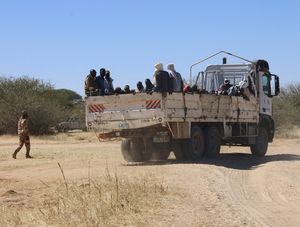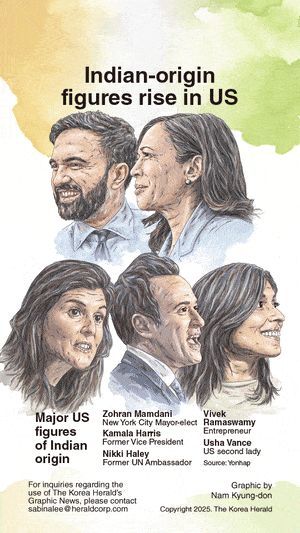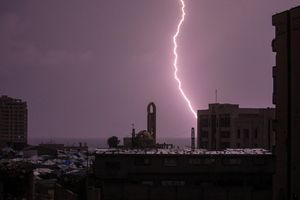![Cranes load shipping containers onto a cargo ship at Jakarta International Container Terminal at Tanjung Priok Port in Jakarta, Indonesia, July 9. AP-Yonhap]](https://contents-cdn.viewus.co.kr/image/2025/07/CP-2023-0309/30667750.jpg) WASHINGTON (Reuters) — President Donald Trump announced Tuesday that the United States will impose a 19 percent tariff on goods from Indonesia under a new agreement with the Southeast Asian country. Trump indicated that more deals are in the works as he continues to push for what he considers better terms with trading partners and ways to reduce the substantial U.S. trade deficit.
WASHINGTON (Reuters) — President Donald Trump announced Tuesday that the United States will impose a 19 percent tariff on goods from Indonesia under a new agreement with the Southeast Asian country. Trump indicated that more deals are in the works as he continues to push for what he considers better terms with trading partners and ways to reduce the substantial U.S. trade deficit.
As the deadline approaches, negotiations are underway with other nations eager to avoid additional U.S. levies beyond the baseline 10 percent tariff on most goods that has been in place since April.
Trump’s rollout of these trade policies has often been chaotic. His actions have upended decades of carefully negotiated reductions in global trade barriers, sending shockwaves through international financial markets and disrupting economic activity worldwide.
Based on Trump’s tariff announcements through Sunday, the Yale Budget Lab estimates that U.S. effective average tariff rates will jump to 20.6 percent from the 2-3 percent range before Trump’s return to the White House in January. Even accounting for consumption shifts, which could bring the rate down to 19.7 percent, it would still mark the highest level since 1933.
Trump outlined the Indonesia deal as similar to a recent pact with Vietnam, featuring a flat tariff on exports to the U.S. at roughly double the current 10 percent rate, with no levies on U.S. exports to Indonesia. The agreement also includes penalties for goods transshipped from China via Indonesia and commitments to purchase certain U.S. products.
\”They’re going to pay 19 percent, and we’re going to pay nothing… we’ll have full access to Indonesia, and we have a couple more deals like this that we’ll be announcing soon,\” Trump stated outside the Oval Office. Later, on his Truth Social platform, Trump announced that Indonesia had agreed to purchase $15 billion in U.S. energy products, $4.5 billion in American agricultural goods, and 50 Boeing jets, though no timeline was specified.
Indonesia’s total trade with the U.S. — just under $40 billion in 2024 — doesn’t rank in the top 15, but it has been growing. U.S. exports to Indonesia rose 3.7 percent last year, while imports from there increased 4.8 percent, leaving the U.S. with a goods trade deficit of nearly $18 billion.
According to U.S. Census Bureau data from the International Trade Centre’s TradeMap tool, the top U.S. import categories from Indonesia last year were palm oil, electronics equipment including data routers and switches, footwear, car tires, natural rubber, and frozen shrimp.
Susiwijono Moegiarso, a senior official with Indonesia’s Coordinating Ministry for Economic Affairs, told Reuters via text message: \”We are preparing a joint statement between the U.S. and Indonesia that will detail the reciprocal tariff structure for Indonesia, including the tariff deal, non-tariff measures, and commercial arrangements. We will release this information to the public soon.\”
Trump had previously threatened Indonesia with a 32 percent tariff rate starting August 1 in a letter sent to its president last week. He sent similar letters to about two dozen trading partners this month, including Canada, Japan, and Brazil, outlining tariff rates ranging from 20 percent to 50 percent, plus a 50 percent tariff on copper.
During a speech in Pittsburgh on Tuesday, Trump expressed a preference for blanket tariffs over complex negotiations, although his Treasury Secretary Scott Bessent and Commerce Secretary Howard Lutnick were keen to secure more trade agreements.
Upon his return to Washington, Trump informed reporters that letters would soon be sent to many smaller countries, suggesting they might face tariffs slightly above 10 percent.
The August 1 deadline gives targeted countries time to negotiate lower tariff rates. Some economists have also noted Trump’s pattern of backing away from his tariff threats.
Since launching his tariff policy, Trump has clinched only a few deals, falling far short of his earlier promises to secure 90 agreements in 90 days.
To date, framework agreements have been reached with the United Kingdom and Vietnam, and an interim deal has been struck with China to forestall the steepest of Trump’s tariffs while negotiations continue between Washington and Beijing.
Trump said talks with India were progressing along similar lines, adding, \”We’re going to have access to India. And you have to understand, we had no access to any of these countries before. Our people couldn’t get in. Now we’re gaining access because of what we’re doing with the tariffs.\”
The breakthrough with Indonesia came as the European Commission, which oversees trade for the EU, prepared to target 72 billion euros ($84.1 billion) worth of U.S. goods — including Boeing aircraft, bourbon whiskey, and cars — for potential tariffs if trade talks with Washington fail.
Trump is threatening a 30 percent tariff on imports from the EU starting August 1, a level European officials say is unacceptable and would disrupt normal trade between two of the world’s largest markets.
The list, sent to EU member states and seen by Reuters on Tuesday, predates Trump’s weekend move to ramp up pressure on the 27-nation bloc. It responds instead to U.S. duties on cars and car parts and a 10 percent baseline tariff.
The package also covers chemicals, medical devices, electrical and precision equipment, as well as agricultural and food products — including a range of fruits and vegetables, along with wine, beer, and spirits — valued at 6.35 billion euros ($7.4 billion).










Most Commented